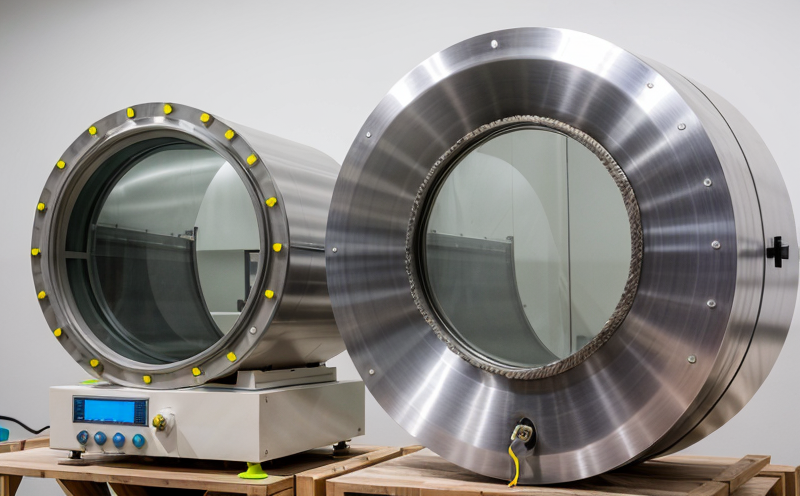ISO 22970 Radiation Shielding Properties of Glass Materials
The ISO 22970 standard specifies the methods for determining the radiation shielding properties of glass materials, particularly those used in applications requiring protection against ionizing radiation. This test is essential for ensuring that glass products meet regulatory requirements and provide effective protection in environments where high levels of radiation are present.
The primary focus of this service involves the evaluation of how well a given glass material can attenuate various types of radiation, including gamma rays and X-rays, which are common in industrial and medical applications. The standard outlines specific procedures for testing both single-layered and multi-layered glasses to determine their shielding performance.
Testing typically starts with specimen preparation, where the glass samples are cut into uniform sizes to ensure consistent results across different batches. The specimens are then exposed to controlled radiation sources under standardized conditions that simulate real-world exposure scenarios. This process allows us to measure the amount of radiation absorbed by each sample and compare it against reference materials.
Once testing is complete, detailed reports are generated summarizing all relevant data points such as attenuation coefficients, half-value layers, and effective atomic numbers. These metrics provide critical insights into the shielding capabilities of the glass under examination. The report also includes recommendations for optimizing design parameters based on the findings to enhance overall performance.
Understanding these parameters helps industries select appropriate materials when designing protective barriers or structures intended to safeguard personnel from harmful radiation exposure during operations involving radioactive sources. Compliance with ISO 22970 ensures that manufacturers adhere strictly to international standards, thereby maintaining high quality and reliability in their products.
Scope and Methodology
The scope of this testing encompasses the evaluation of glass materials' ability to shield against ionizing radiation according to ISO 22970. The methodology involves subjecting prepared specimens to specified radiation sources while measuring their attenuation characteristics.
- Radiation Sources: Gamma rays and X-rays are commonly used in these tests.
- Specimen Preparation: Uniformly sized pieces of glass are cut for consistent measurement.
- Data Collection: Attenuation coefficients, half-value layers, and effective atomic numbers are recorded.
The process ensures accurate determination of the shielding properties based on internationally recognized standards. This approach guarantees reliable results that can be trusted by stakeholders involved in safety-critical industries like healthcare, nuclear power, and research facilities.
Why Choose This Test
Selecting ISO 22970 for radiation shielding property testing offers several advantages over other methods. Firstly, it provides a standardized framework that ensures consistency and comparability across different laboratories worldwide. Secondly, adherence to this standard enhances credibility within regulatory bodies responsible for setting safety guidelines.
For quality managers looking to maintain product excellence, choosing ISO 22970 means ensuring compliance with industry best practices. Compliance officers benefit from having clear evidence supporting claims about the effectiveness of their chosen materials. R&D engineers can rely on this test when developing new products or improving existing designs aimed at enhancing radiation protection.
Procurement teams will appreciate knowing they have access to tested and validated materials, reducing risks associated with substandard products entering supply chains. Overall, selecting ISO 22970 ensures robust testing capable of meeting stringent requirements while delivering valuable information for decision-makers across various sectors.
Environmental and Sustainability Contributions
- Eco-friendly Production: Utilizing glass for radiation shielding reduces reliance on less sustainable materials like lead.
- Recyclability: Glass is easily recycled without loss of quality, promoting circular economy practices.
- Energy Efficiency: Properly designed shields made from glass can minimize energy consumption by reducing unnecessary radiation exposure.
- Lifetime Usage: High-quality glass products last longer, extending their useful life and reducing waste generation.
The use of ISO 22970 ensures that the production processes align with environmental goals, contributing positively to sustainability efforts. By selecting this test, organizations demonstrate a commitment to responsible resource management and long-term environmental stewardship.





